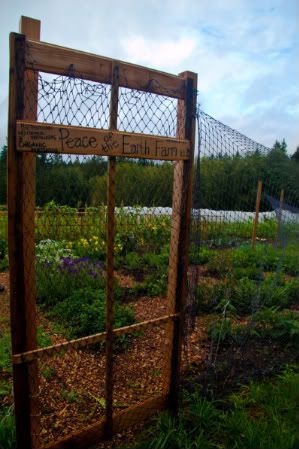Today was a typical day on the farm and I thought it would be good to share with you what I did.
First, I took a farm walk. Going on a farm walk at the start and finish of each day is extremely important, no matter how small or large the farm is. This daily contact with each facet of the farm helps me stay connected to the crops and what is going on around them. As I walk, I look at the general health of the plants, take note of any weeding that needs to be done, put my hand a few inches in the soil to check moisture and also I take a very close inspection of at least one plant of each variety and crop. This last step is very important, especially for organic and natural farmers. I need to know exactly what is going on with the plants. If there is insect or other animal damage, the type of damage can tell me a lot. For instance, tiny, very uniform holes that resemble "BB gun" holes are probably flea beetles. I might also see the actual insect pest, such as aphids. If I know early enough what the insect problem is, I can more easily come up with a prevention solution. Remember that with organic and natural farming, prevention is key. Also, when I find a "pest", I should not just assume that there is an outbreak. If I look closer, I might also see the pest's predator, such as lace wings or lady bug larvae. All farmers and gardeners should have at least a basic understanding of common pests and their predators. A good book on the subject: "Biodiversity and Pest Management in Agroecosystems" by Miguel Altieri. On my farm walks I also like to do some observation of the local wildlife....the pollinators, the ground life, the birds, the non-cultivated plants, etc, etc, etc... this is all part of the farm habitat, or as Miguel Altieri calls it, the agroecosystem, and I want to help keep it healthy. Today everything looked great; no major issues to report.
I then started pruning and trellising some tomatoes. We use the string method for trellising and I'll post a blog soon with pictures and step by step instructions on how to trellis with this method and show how we prune (it seems everyone does this differently, but I'll share what I have learned).
Next, I did some transplanting. I transplanted two month old peppers (cayenne- "long thin ring of fire", bells-"gold Marconi", and a Habenero variety), egg plants ("oriental express"), more basil ("aroma"), kholrabi ("korridor"), arugula ("astro"), some herbs (including skullcap, vervain, and sage), and flowers ("bells of ireland", echinacea, and delphinium). I made sure to water in all the new plants.
Lastly I weeded around some borage, nigella ("love in a mist" best name ever for a flower), sage, butterfly weed, and echinacea.
Monday, June 15, 2009
Farm update
Subscribe to:
Post Comments (Atom)

No comments:
Post a Comment